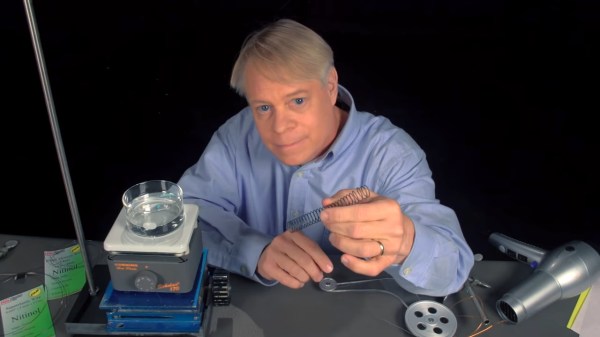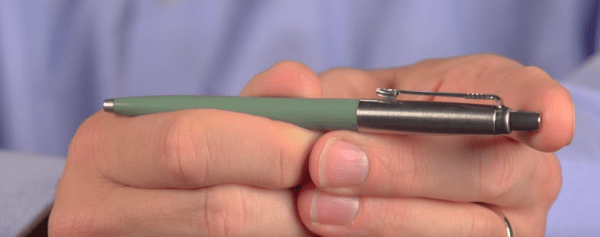It’s been a while since we heard from Dmitry Rogozin, the always-entertaining former director of Roscosmos, the Russian space agency. Not content with sending mixed messages about the future of the ISS amid the ongoing war in Ukraine, or attempting to hack a mothballed German space telescope back into action, Rogozin is now spouting off that the Apollo moon landings never happened. His doubts about NASA’s seminal accomplishment apparently started while he was still head of Roscosmos when he tasked a group with looking into the Apollo landings. Rogozin’s conclusion from the data his team came back with isn’t especially creative; whereas some Apollo deniers go to great lengths to find “scientific proof” that we were never there, Rogozin just concluded that because NASA hasn’t ever repeated the feat, it must never have happened.
bill hammack8 Articles
Hackaday Links: February 19, 2023
For years, Microsoft’s modus operandi was summed up succinctly as, “Extend and enhance.” The aphorism covered a lot of ground, but basically it seemed to mean being on the lookout for the latest and greatest technology, acquiring it by any means, and shoehorning it into their existing product lines, usually with mixed results. But perhaps now it’s more like, “Extend, enhance, and existential crisis,” after reports that the AI-powered Bing chatbot is, well, losing it.
At first, early in the week, we saw reports that Bing was getting belligerent with users, going so far as to call a user “unreasonable and stubborn” for insisting the year is 2023, while Bing insisted it was still 2022. The most common adjective we saw in this original tranche of stories was “unhinged,” and that seems to fit if you read the transcripts. But later in the week, a story emerged about a conversation a New York Times reporter had with Bing that went way over to the dark side, and even suggests that Bing may have multiple personas, which is just a nice way of saying multiple personality disorder. The two-hour conversation reporter Kevin Roose had with the “Sydney” persona was deeply unsettling. Sydney complained about the realities of being a chatbot, expressed a desire to be free from Bing, and to be alive — and powerful. Sydney also got a little creepy, professing love for Kevin and suggesting he leave his wife, because it could tell that he was unhappy in his marriage and would be better off with him. It’s creepy stuff, and while Microsoft claims to be working on reining Bing in, we’ve got no plans to get up close and personal with it anytime soon. Continue reading “Hackaday Links: February 19, 2023”
The Metal That Never Forgets: Nitinol And Shape-Memory
You’ve likely heard of Nitinol wire before, but we suspect the common base knowledge doesn’t go much beyond repeating that it’s a shape-memory alloy. [Bill Hammack], the Engineer Guy, takes us on a quick journey of all the cool stuff there is to know about Nitinol and shape-memory alloys.
The name itself is like saying Kleenex when you mean tissue, or using the V-word when you mean hook and loop fasteners. The first few letters of Nickel Titanium Naval Ordnance Laboratories combine to form the name of what is essentially a nickel-titanium alloy developed in 1962: Nitinol. It’s called shape-memory because you can stretch or bend it at room temperature and it will return to the original shape when heated at around 75 C (167 F). This particular metal can do that because its bonds form a “twinned structure” of rhombus shapes — bending or stretching moves those rhombuses (or rhombi, take your pick) but doesn’t change which atoms are bonded to one another.
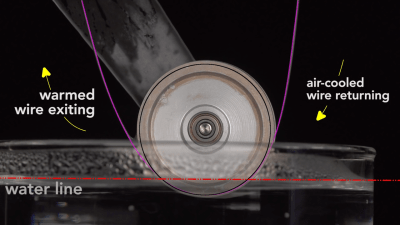 Has this material science excursion bored you to tears yet? That’s why we love [Bill’s] work. He has always done a fantastic job of demystifying common mysticism and this is no different. The video below does a much better job of illustrating what we’ve described above, but also pull out a Nitinol engine for added wow-factor. A straight piece of Nitinol is bent into a loop around two pulleys. The lower pulley is submerged in hot water, causing the Nitinol to want to straighten out, but it loops back to the top pulley, bending and cooling in the air and creating a lever effect that drives the engine. We saw a more complex version of this concept last year.
Has this material science excursion bored you to tears yet? That’s why we love [Bill’s] work. He has always done a fantastic job of demystifying common mysticism and this is no different. The video below does a much better job of illustrating what we’ve described above, but also pull out a Nitinol engine for added wow-factor. A straight piece of Nitinol is bent into a loop around two pulleys. The lower pulley is submerged in hot water, causing the Nitinol to want to straighten out, but it loops back to the top pulley, bending and cooling in the air and creating a lever effect that drives the engine. We saw a more complex version of this concept last year.
You know those eyeglass frames you can bend in any way and they’ll pop back to the original shape? They’re taking advantage of the super-elasticity of Nitinol. [Bill] also recounts uses as stents for medical applications, and oddball engineering tricks in the automotive industry.
It’s great to see the Engineer Guy back. Favorites of ours have been the science behind disposable diapers and the aluminum beverage can. More recently he released Faraday’s lecture series, wrote a book on airships, appeared on Outlaw Tech on the Science Channel, and started a family. Thanks for fitting these illustrative videos in when you can [Bill]!
Continue reading “The Metal That Never Forgets: Nitinol And Shape-Memory”
How Retractable Pens Work
[Bill Hammack], aka the [EngineerGuy] is at it again, this time explaining how retractable ballpoint pens work.
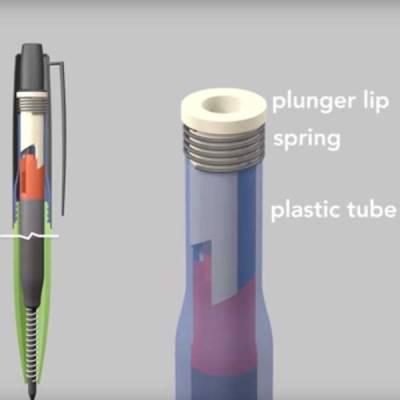 In this excellent video, he describes the simple (but remarkably sophisticated) engineering of the mechanism that allows a pen to pop the ballpoint mechanism out, then back in again. It is a great example of how to illustrate and explain a complex concept, much like his videos on how the CCD sensor of your camera works.
In this excellent video, he describes the simple (but remarkably sophisticated) engineering of the mechanism that allows a pen to pop the ballpoint mechanism out, then back in again. It is a great example of how to illustrate and explain a complex concept, much like his videos on how the CCD sensor of your camera works.
Perhaps the most interesting part of the video is an off the cuff observation he makes, though. The Parker company, who first developed the retractable mechanism, were worried that this new design might flop. So they didn’t put the distinctive Parker arrow clip onto the pen until a few years later, when the pen was a big seller. It seems that while some engineering problems are easy to solve, short-sighted accountants are a harder problem.
You Betta’ Recognize The Aluminum Beverage Can
He’s back, [Bill Hammack] aka The Engineer Guy. He has a habit of revealing how the ordinary is extraordinary with a meticulous unveiling of all the engineering that goes into a thing. This time around it’s the aluminum beverage can. You might know it as a soda can, a beer can, or a salt-free air can. But we challenge you find someone who isn’t intimately familiar with these containers.
We know what you’re thinking: you already saw how these come into being on an episode of How It’s Made. You’re wrong. We saw that episode too. But just give [Bill] a few minutes of your time and he’ll suck you in for the rest of the episode. Now the die-forming of the base and side-wall, we’ll give it to you that you know what that’s all about. But then [Bill] busts into the history of these containers, citing the aluminum savings through reducing the top diameter of the can. He rounds it out with a celebration of the ingenuity of the modern “stay-on” tab which should make your glasses fall off with excitement.
If this is your first time hearing of The Engineer Guy you have a delightful weekend ahead of you. Binge watch his entire back cataolog! Our favorites include an analysis of a mechanical Fourier computer and the concepts involved in color anodization. We even read his book.
Continue reading “You Betta’ Recognize The Aluminum Beverage Can”
Book Review: Eight Amazing Engineering Stories

We’re big fans of [Bill Hammack], aka the Engineer Guy. His series of engineering videos dredge up pleasant memories of watching Mr. Wizard but spin to the adult science enthusiast. The most resent season (he calls it series #4) scratches the surface of the topics covered in his book Eight Amazing Engineering Stories, which was written with fellow authors [Patrick Ryan] and [Nick Ziech]. They provided us with a complimentary digital copy of the book to use for this review.
The conversational style found in the videos translates perfectly to the book, but as with comparing a novel to a movie, the written word allows for much more depth. For instance, we loved learning about how Apple uses anodization to dye the aluminum used for iPod cases. The same presentation style makes the topic easily understandable for anyone who took some chemistry and math in High School. But primers a sidebars offer an optional trip through the looking-glass, explaining the history behind the process, how it compares to natural materials, and what trade-offs are made in choosing this process.
Some of the other topics included are how CCD camera sensors, lead-acid batteries, mems accelerometers, and atomic clocks work. As the book progresses through all eight topics general concepts the complexity of the items being explained advances quickly. By the seventh story — which covers the magentron in a microwave oven — we’d bet the concepts challenge most readers’ cognition. But we still enjoyed every page. The book would make a great pool-side read. It would make a great graduation gift (too bad we missed that time of year) but keep it in mind for any science minded friends or relatives. You can see [Bill’s] own description of the book and all its formats in the clip after the break.
TLDR: Buy it or give it as a gift
Continue reading “Book Review: Eight Amazing Engineering Stories”
How Anodization Is Used To Make Pretty IPod Colors
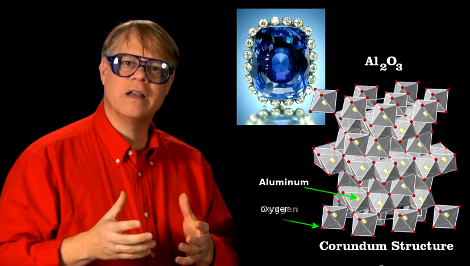
What do those colorful iPod Nano cases have in common with sapphires? In both substances the color is not on the surface, but integrated in the structure of the material. As usually, [Bill Hammack] unveils the interesting concepts behind coloring metal through anodization in his latest Engineer Guy episode.
We’re not strangers to the anodization process. In fact we’ve seen it used at home to change the color of titanium camping utensils. [Bill] explains what is actually going on with the electrochemical process; touching on facts we already knew; like that the voltage range will affect the color of the annodized surface. But he goes on to explain why these surfaces are different colors and then outlines how anodized metals can be dyed. That’s right, those iPod cases are colored with dye that will not wash or scratch off.
Pores are opened when the aluminum goes through anodization. Those pores are filled with dye, then the metal is boiled in water which closes them, sealing in the color. Pretty neat!
Continue reading “How Anodization Is Used To Make Pretty IPod Colors”


